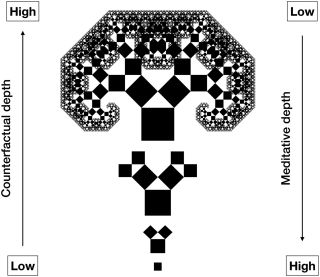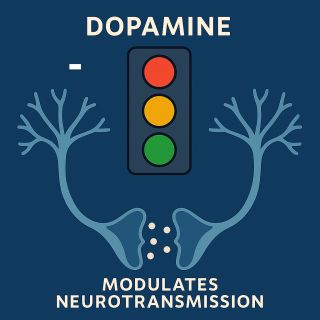Meditation
How Meditation Reshapes Thoughts: The Complete Reset
Meditation reshapes thoughts by interrupting your brain’s automatic predictions, loosening rigid mental habits, and training you to experience the present moment with more clarity and less rumination. In everyday terms, it helps you think less on autopilot and respond more intentionally, even under stress.
This shift isn’t mystical; it’s neurocognitive. As research in contemplative neuroscience and cognitive psychology shows (Harvard, 2024; Stanford researchers), consistent meditation practice alters how your brain filters information, forms narratives, and reacts emotionally—creating space for wiser, more flexible choices.
Why It Matters: Your Brain Is Predicting, Not Just Perceiving
Your mind is not a camera; it is a prediction engine.
Instead of simply recording reality, your brain constantly guesses what will happen next based on past experiences, then fills in the gaps.
- This shortcut saves energy but also locks you into habitual thought loops.
- Anxiety, self-criticism, and overthinking often arise from these recycled predictions.
When these patterns become rigid, you stop seeing what is actually happening and start seeing what your brain expects. Meditation reshapes thoughts by softening those predictions, so you relate to life as it is—not just as your history.
Key idea: Meditation is less about adding calm and more about unlearning mental habits that no longer serve you.
How Meditation Actually Changes Your Thinking (Quick Answer)
Here’s how meditation reshapes thoughts in practice:
- It pauses automatic predictions for a moment, so you notice raw sensations before reactions.
- It reduces the precision of old mental habits, so they feel less "true" and less sticky.
- It strengthens awareness, so you can choose your response instead of spiraling.
In other words, meditation helps you move from reactive thinking to responsive clarity.
People Also Ask: How Does Meditation Change Thought Patterns?
Meditation changes thought patterns by training your attention to witness thoughts instead of automatically believing or following them. Over time, the brain relies less on rigid, past-driven narratives and becomes more flexible, reducing rumination and repetitive negative thinking.
The Predictive Mind: The Hidden Engine Behind Your Thoughts
Modern neuroscience describes the brain as a predictive system that constantly compares incoming sensory data with internal models of the world.
- When predictions match reality, the brain runs on autopilot.
- When they don’t, it updates its model—or doubles down on old beliefs.
This process shapes:
- What you notice.
- How you interpret events.
- How quickly you jump to stories like "I’m not good enough" or "Something will go wrong."
Meditation inserts awareness into this loop. By repeatedly returning attention to the breath, body, or sounds without judgment, you temporarily dial down the authority of those default predictions. Over time, this can:
- Decrease repetitive negative thinking.
- Reduce emotional overreactions.
- Increase psychological flexibility and creativity.
People Also Ask: Can Meditation Rewire Negative Thoughts?
Yes. While meditation is not an instant cure, regular practice reduces repetitive negative thinking and strengthens regions involved in emotion regulation, attention, and perspective-taking, helping you reinterpret situations less harshly and break cycles of self-criticism.
From Monkey Mind to Mental Freedom
Most of us live in constant commentary mode—planning, replaying, worrying.
This "monkey mind" is not the enemy; it is your brain doing its predictive job.
But left unchecked, it:
- Drags you into worst-case scenarios.
- Hooks you into arguments long after they end.
- Keeps you scrolling, comparing, doubting.
Meditation reshapes thoughts by changing your relationship to this mental activity:
- Thoughts become events you observe, not orders you must follow.
- Emotional spikes become signals, not verdicts.
- Space appears between trigger and reaction.
Insight: The goal is not to stop thinking—it’s to stop being dominated by every thought that appears.
How Meditation Loosens Mental Constraints
Researchers describe thoughts along two key dimensions:
- Deliberate: Goal-directed, intentional (e.g., planning a project).
- Automatic: Habitual, intrusive (e.g., rumination, worry).
When automatic constraints dominate, your inner world becomes repetitive and narrow.
Meditation—especially open monitoring or mindfulness meditation—reduces over-attachment to both. You practice noticing:
- "Here is planning."
- "Here is worry."
- "Here is self-judgment."
Without reinforcing them, you flatten the grooves those thoughts usually follow. This is how meditation reshapes thoughts: it makes your mental landscape less carved by old reactions and more open to new, adaptive responses.
Visualizing It: Pruning the Mental Tree
Imagine your thinking as a branching tree.
- The trunk: raw experience (breath, sound, body sensations).
- The branches: interpretations, memories, judgments, imagined futures.
As you climb higher, you move further from direct experience and deeper into stories.
Meditation gently guides you back down the tree:
- From "They didn’t reply, they must be upset" to "Tightness in the chest. Thought: they’re upset."
- From "I always fail" to "Sensation of heaviness. Thought pattern: self-criticism."
By repeatedly resting closer to the trunk, you "prune" overgrown branches of unnecessary narratives. This is not denial; it’s deconstructing automatic assumptions so you can see more clearly.
People Also Ask: Does Meditation Stop Overthinking?
Meditation doesn’t erase thoughts, but it reduces overthinking by changing how compelling your thoughts feel. You learn to notice mental chatter without merging with it, which significantly lowers rumination and mental noise over time.
Real-Life Examples: How This Looks Off the Cushion
Here’s how meditation reshapes thoughts in everyday situations:
- Work feedback: Instead of "I’m terrible at this," you notice the sting, breathe, and translate it into "There’s something to improve," reducing shame-driven spirals.
- Social media: You catch "Everyone is ahead of me" as a thought, not a fact, preventing comparison loops.
- Parenting moment: Your child melts down. Rather than reacting from "I can’t handle this," you sense your rising tension, pause for three breaths, and respond with clearer boundaries and empathy.
These shifts might seem small, but accumulated over weeks and months, they fundamentally restructure your default mindset.
The Science Behind the Shift (Short & Clear)
Emerging evidence from large-scale reviews and meditation studies suggests:
- Regular mindfulness practice is linked to lower repetitive negative thinking and greater self-compassion.
- Stress-management interventions that include meditation are associated with healthier cortisol patterns, reflecting improved stress resilience.
- Training in attention and open monitoring alters brain networks tied to mind-wandering and self-referential thinking.
While findings continue to evolve, the convergence of contemplative traditions and modern research supports a core idea: attention can be trained, and trained attention reshapes thoughts.
People Also Ask: How Long Until Meditation Changes My Thoughts?
Beginners often notice subtle changes—more pause, less reactivity—within 2–4 weeks of consistent practice (5–10 minutes daily). Deeper shifts in habits, self-talk, and emotional resilience typically build over 8–12 weeks and continue with long-term practice.
Practical Application: Bringing Predictive Awareness Into Daily Life
To make this real, combine awareness with micro-interruptions of autopilot.
Try these simple applications:
- Before replying to a difficult message, pause for three slow breaths.
- When you notice a harsh thought, silently label it: "Judging," "Catastrophizing," "Comparing."
- When stressed, shift attention to physical sensations for 10 seconds.
These tiny moves weaken old predictive scripts and signal to your brain, "We don’t have to react this way anymore."
5-Step Quick Start: Use Meditation to Reshape Your Thoughts
Set a tiny, non-negotiable time
- Start with 5 minutes daily.
- Choose the same time (after waking, lunch break, before bed) to build habit reliability.
Practice anchored awareness
- Sit comfortably.
- Focus on your breathing or contact points with the chair.
- When thoughts appear (they will), notice them and gently return.
Add open monitoring (after 1–2 weeks)
- Instead of only focusing on the breath, include sounds, body sensations, and thoughts.
- Let everything arise and pass without fixing, chasing, or judging.
Use real-time labels
-
Silently name what you notice:
- "Planning"
- "Worrying"
- "Remembering"
- "Judging"
- This labeling depersonalizes thoughts and loosens their grip.
-
Silently name what you notice:
Integrate into daily triggers
-
Choose 2–3 specific cues:
- Opening your inbox.
- Waiting in line.
- Hearing a notification.
- Use each cue as a 10–20 second mini-meditation: feel your breath, notice thoughts, soften shoulders.
-
Choose 2–3 specific cues:
People Also Ask: What Type of Meditation Is Best for Changing Thoughts?
For reshaping thought patterns, mindfulness meditation, open monitoring, and compassion practices are especially effective. They train non-judgmental awareness, interrupt rumination, and cultivate kinder, more stable inner dialogue.
Key Takeaways: How Meditation Reshapes Thoughts (At a Glance)
- Meditation reshapes thoughts by interrupting automatic predictions and loosening rigid mental habits.
- Your brain is predictive, not passive; meditation helps you see predictions as predictions, not absolute truth.
- Over time, practice reduces rumination, self-criticism, and emotional reactivity while enhancing cognitive flexibility.
- Short, consistent sessions plus in-the-moment awareness create lasting shifts in how you think, feel, and respond.
- You are not trying to stop thinking; you are learning to relate to thoughts with clarity, curiosity, and choice.
Try this today: For one minute, pause and ask, "What’s here now when there is no problem to solve?" Notice how your mind responds—without needing to fix it. That’s where the reshaping begins.






